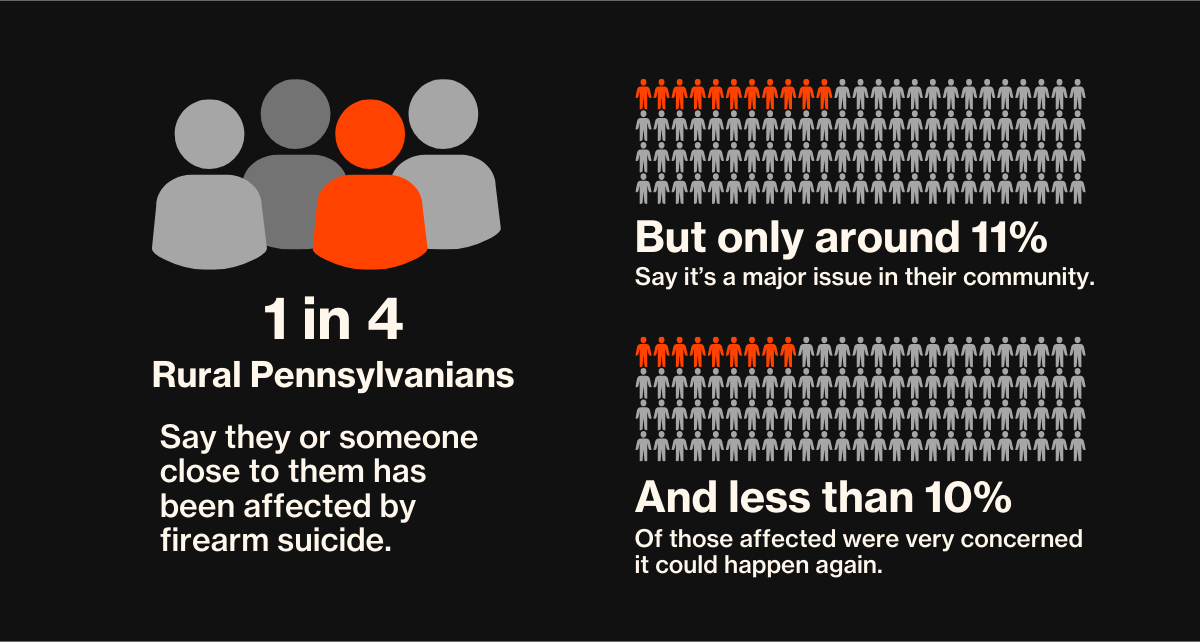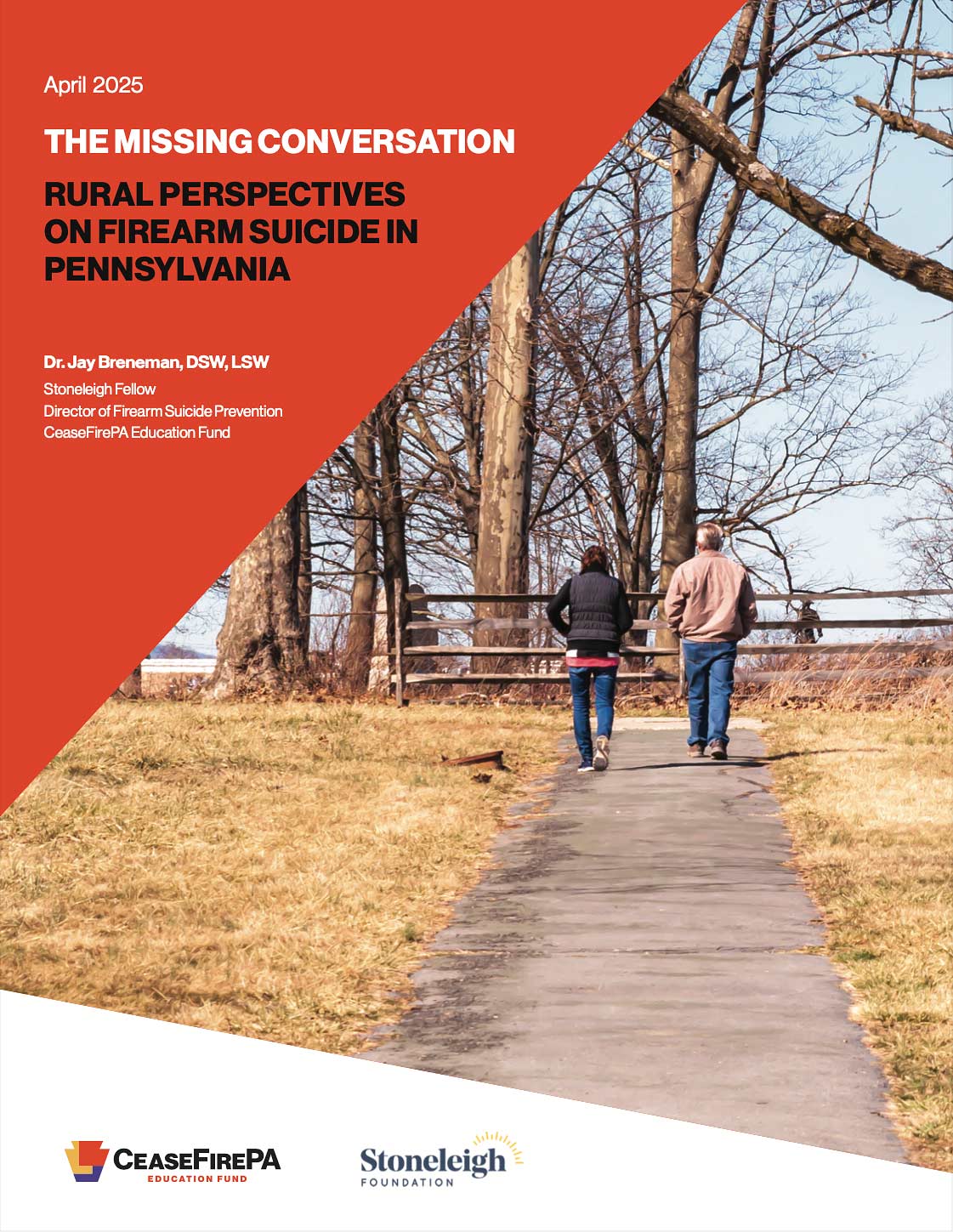Firearm suicide accounts for nearly 60% of all gun-related deaths statewide, and more than 80% in 44 rural counties. It is the most common form of gun violence in Pennsylvania—yet it remains the least discussed.
In the first known published polling on rural perceptions of this issue, 1 in 4 rural Pennsylvanians said they’ve been personally affected by firearm suicide, but very few see it as a widespread problem in their community.
This report was written to help break a silence that has lasted far too long.

AN URGENT CALL FOR CHANGE

We heard from rural Pennsylvanians who’ve felt the impact of firearm suicide firsthand. But their stories are rarely shared. This report combines data, personal experience, and research to show what’s been missing—not compassion, but conversation. Not concern, but action. Silence has let this crisis grow. Change begins when we talk about it and treat it as a problem we must face together.
FIREARM SUICIDE AND THE RURAL-URBAN DIVIDE

One of the most overlooked aspects of Pennsylvania’s firearm death data is that suicide accounts for a majority of gun deaths in the state, except for a few urban centers.

Nearly, 60% of all firearm deaths
statewide are suicides.

Nearly 80% of all gun deaths
in rural counties are firearm suicides.
In the early 2000s, car crashes killed twice as many people in rural Pennsylvania as firearm suicide. Two decades later, crash deaths have dropped by nearly a third, while firearm suicides have climbed by more than 40%. Between 2018 and 2023, more than 2,207 people died by firearm suicide in Pennsylvania’s rural counties, nearly matching the 2,263 deaths from unintentional vehicle crashes during the same period.
LETHAL MEANS AND SUICIDE RISK
Contrary to the misconception that individuals intent on suicide will inevitably find another method, research shows that reducing access to firearms lowers suicide rates.
Because firearm suicide attempts are so often fatal, even small environmental changes can have an outsized impact. This shift underscores a simple but powerful truth: addressing environmental factors, such as access to lethal means, allows communities to reduce suicide risk, even without knowing who might be in crisis.
The same principle has worked in suicide prevention. When barriers were installed on bridges with high rates of suicide, deaths at those locations dropped by more than 90%, without shifting to nearby sites.
That’s why communities don’t need perfect answers or the ability to predict exactly who will be at risk. What they need are practical tools and shared language to talk about those tools. More than anything, public silence around firearm suicide has slowed local and statewide action. Shifting that silence by creating space for honest, informed conversations is foundational to any policy or intervention.
Take a Stand
We’ll never stop fighting for a safe, gun violence-free Pennsylvania. If you share that goal, power our efforts today.



